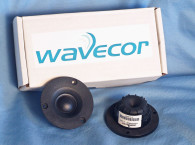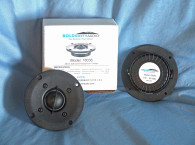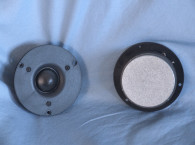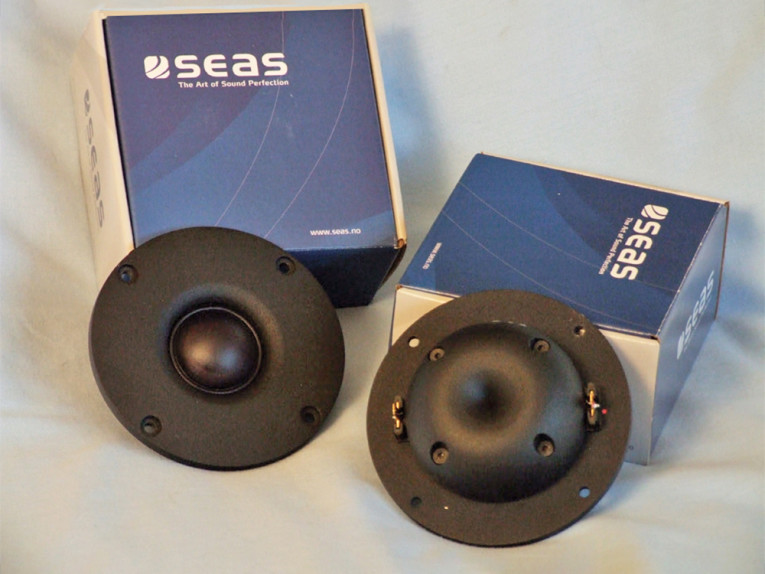
SEAS new T35C002 is basically an Excel line version of the company’s Exotic line T35 Alnico V tweeter, but it uses a neodymium magnet. The T35C002 incorporates a 1.5” coated cloth diaphragm (effective piston area is 11.9 cm2) sourced from German high-end diaphragm manufacturer Dr. Kurt Muller (DKM). DKM was among the world’s first to offer fabric tweeter dome diaphragms. It also manufactured the famous 1.5” H087 tweeter. The tweeter was featured in the successful Dynaco A25 loudspeaker, which was produced from 1969–1974. The underhung motor has a 3 mm gap height and a 2 mm voice coil height for a 0.5 mm physical XMAX. Other features include a 35 mm (1.38”) voice coil wound with copper-clad aluminum wire (CCAW) on a vented aluminum former, 7 mm thick cast aluminum face plate with moderate horn loading, a neodymium ring magnet in the motor system, a CNC-machined top plate and T-yoke, plus a damped cast aluminum cavity and gold-plated terminals.
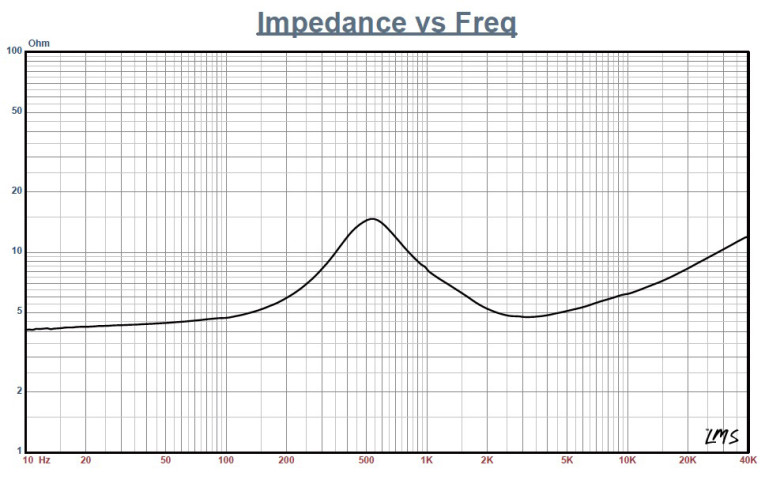
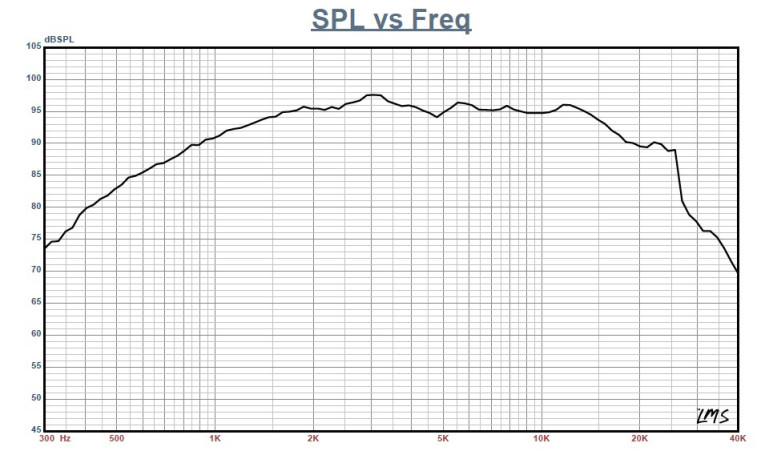
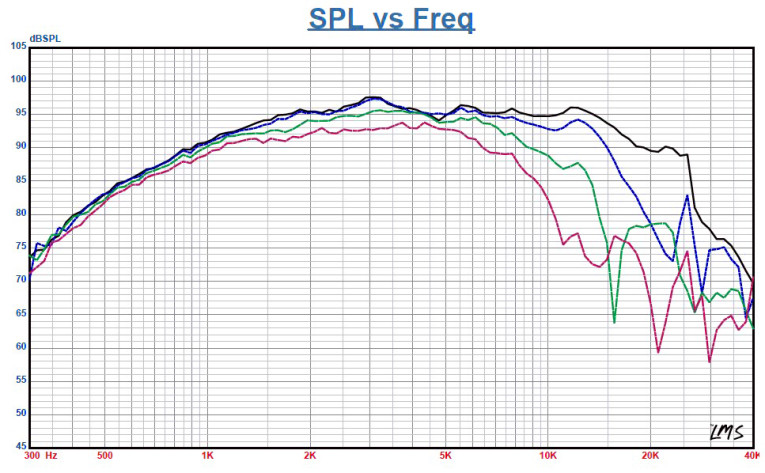
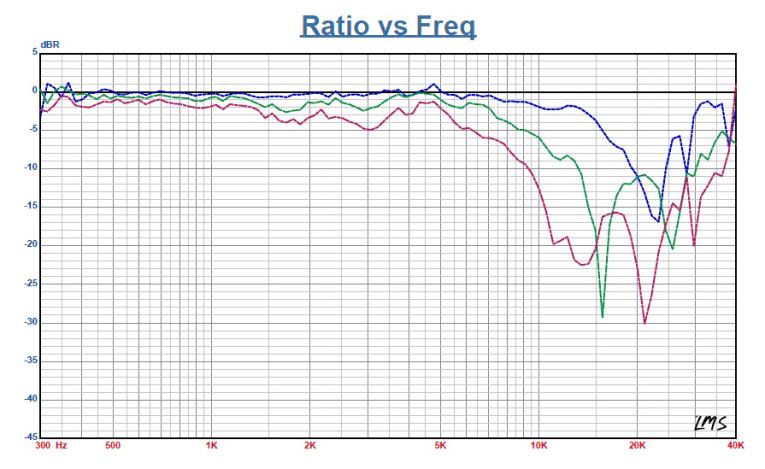
I used the LinearX LMS analyzer to generate a stepped sine wave impedance plot for the T35C002. Figure 1 shows the result of the 300-point impedance sine wave sweep. The tweeter resonance is 547 Hz (the factory preliminary specification is 620 Hz). Minimum impedance for this tweeter is 4.75 Ω at 3.1 kHz with a measured RE = 4.43 Ω.
After completing the impedance measurements, I recess mounted the SEAS tweeter in a small enclosure that had a 7” × 12” baffle area and measured the on- and off-axis frequency response at 2.83 V/1 m. Figure 2 depicts the on-axis sound pressure level (SPL). The T35C002’s frequency response is a flat ±1.75 dB from 1.5 to 14.5 kHz. The device begins its second-order low-pass rolloff at the same frequency, 14.5 kHz. Figure 3 shows the T35C002’s on- and off-axis response. Off-axis, the device is –5.9 dB down at 10 kHz from the on-axis response with respect to the 30° off-axis curve and –12.6 dB at 45° off-axis, again with respect to the on-axis response. Figure 4 shows the normalized version of Figure 3. In terms of production consistency, Figure 5 shows the two-sample SPL comparison, which minor variation between 8 to 10 kHz, and somewhat more above 15 kHz (above 10 kHz is of no consequence given that it takes an 8-dB change in SPL to be audible).Next, I recess mounted the T35C002 and used the Listen SoundCheck analyzer and 0.25” SCM microphone to measure the impulse response. Importing this data in the Listen SoundMap software produced the cumulative spectral decay plot (CSD) waterfall plot shown in Figure 6.


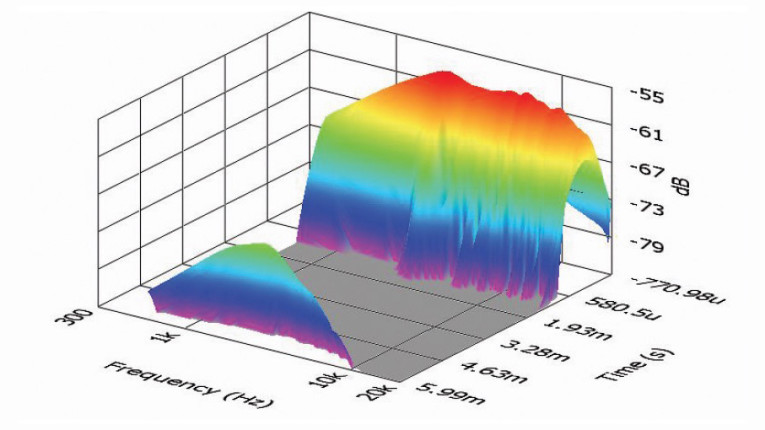
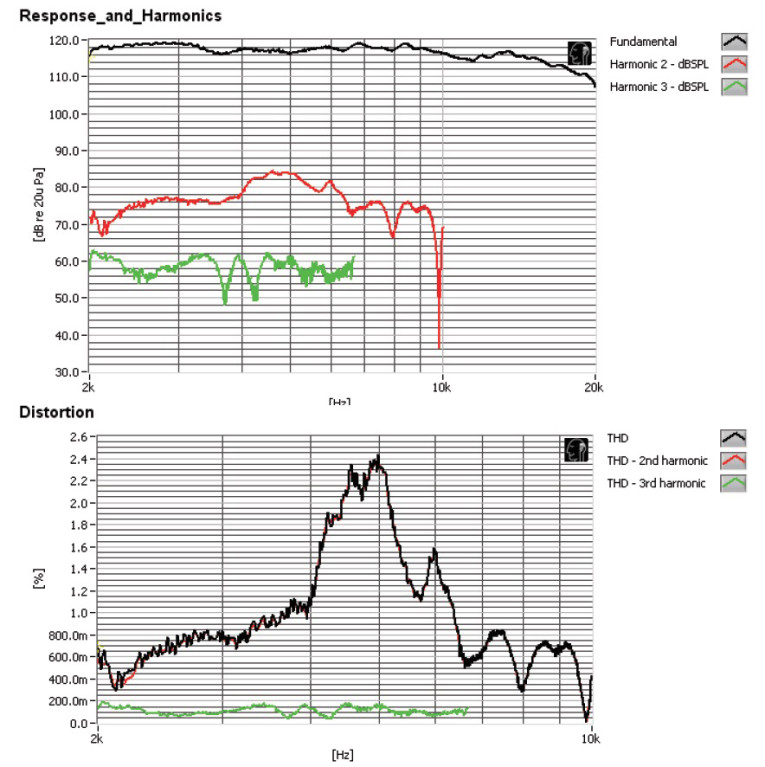
Figure 7 shows the short-time Fourier transform (STFT) displayed as a surface plot. Last, I set the 1-m SPL to 94 dB (4.2 V determined by using the SoundCheck noise generator and SLM utilities) and the sweep range to 2 to 20 kHz and measured the second- and third-harmonic distortion at 10 cm (see Figure 8). I did this to determine the relationship between the second- and third-harmonic distortion. However, the correlation to subjective preference based on THD is not well established. I have always liked the concept of using a larger than 1” diaphragm tweeter for two-way designs and the T35C002 would be a great performer for that application. For more information, visit www.seas.no. VC
This article was originally published in Voice Coil, April 2014.







